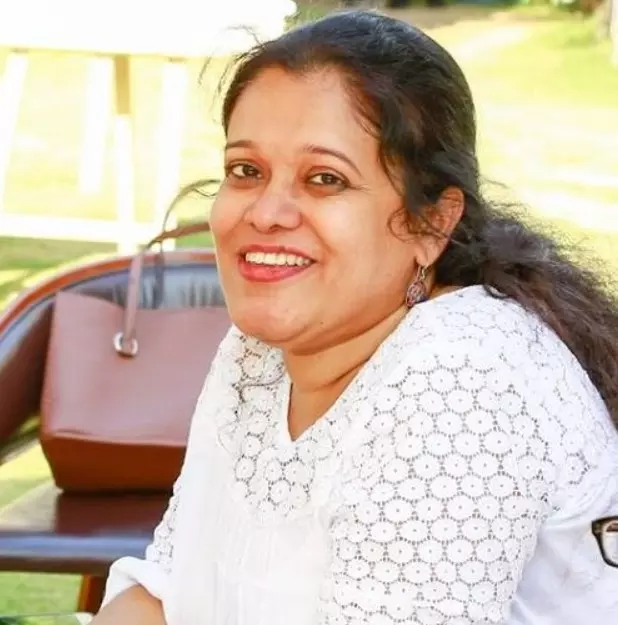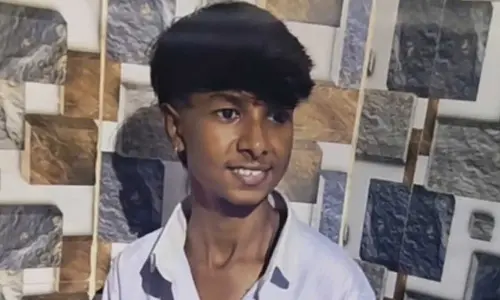Population Foundation of India assesses impact of Covid 19 on women and girls

Population Foundation of India assesses impact of Covid 19 on women and girls
The COVID-19 pandemic and subsequent countrywide lockdown measures have affected all aspects of our social and economic lives. Public health responses and policies are yet to adequately address the specific needs of vulnerable populations
The COVID-19 pandemic and subsequent countrywide lockdown measures have affected all aspects of our social and economic lives. Public health responses and policies are yet to adequately address the specific needs of vulnerable populations. The effects of the pandemic threaten to reverse the limited progress made on gender equality and women's sexual and reproductive health. Evidence from past epidemics as well as the existing body of evidence around the impact of COVID-19 suggests that the disruption of essential health services, including family planning put women and girls at risk of decreased access to services as resources are diverted from routine health services including pre- and post-natal health care, family planning and contraceptive supply, menstrual health and other reproductive health services.
The limited availability of essential health services, including sexual and reproductive health services will be detrimental in the long run. According to estimates by UNICEF, India would have the highest number of forecast births, at 20 million, in the nine months period dating from when COVID-19 was first declared a pandemic. The Guttmacher institute has projected that a 10% decline in use of reversible contraceptive methods in low -and-middle-income countries due to reduced access would result in an additional 49 million women with an unmet need for modern contraceptives and an additional 15 million unintended pregnancies over the course of a year.
On the eve of World Population Day, Population Foundation of India has released an important policy paper —The Impact of COVID 19 on Women, assessing the differential impact of COVID-19 and recommending timely measures to ensure women and girls remain central to COVID-19 response planning and recovery efforts.
This critical document takes an in-depth and comprehensive look at the different impacts of the COVID-19 crisis across the country and specifically on women and girls. The authors relied on global evidence as well as studies by PFI which assessed the impact of COVID-19 on young people, girls and women and their access to health services.
Some key recommendations of the brief include:
• Given the evidence we must apply a gender lens – using gender disaggregated data and evidence to address programmes and policies around COVID19
• Increase investments in family planning as the most cost-effective public health measures.
• Invest in the 3.3 million female frontline health workers who are the face of the Indian public health system and in many parts of the country the only health-care support.
• Use social and behaviour change communication (SBCC) campaigns to spread information and awareness on COVID-19 and address myths and misconceptions.
• Extra efforts are required to strengthen the public health system and increase health budgets to optimize service delivery and health facilities as well as maintain supply chains.
According to Poonam Muttreja, Executive Director, PFI "The COVID-19 crisis has placed unprecedented demands on our social services and health care system. Women are increasingly at greater risk of sexual and domestic violence, disruptions to their healthcare services, stock outs of supplies of contraceptives and menstrual hygiene products and mental stress and anxiety. It is critical that we reassess our emergency response policies through a gender lens to improve planning and programming. It is also a testimony to PFI's strong commitment to women's reproductive and sexual health and rights that guides our research and programme commitment to COVID 19."
IMPACT OF COVID-19 ON WOMEN AND GIRLS
SEXUAL & REPRODUCTIVE HEALTH & RIGHTS
1.1 FAMILY PLANNING – CONTRACEPTIVES, UNMET NEED AND BIRTHS
• Recently released projections by the UNFPA suggest that 47 million women in 114 low- and middleincome countries may not be able to access modern ontraceptives and 7 million unintended pregnancies are expected to occur if the lockdown carries on for six months and there are major disruptions to health services. For every three months the lockdown continues, up to an additional two million women may be unable to use modern contraceptives. (Source: https://www.unfpa.org/press/new-unfpa-projections-predict-calamitous-impact-womens-healthcovid-19-pandemic-continues)
• According to projections by United Nations Children's Fund's (UNICEF), released on May 6th 2020, India is set to record the highest number of births in the 9 months since COVID-19 was declared a pandemic on March 11, with more than 20 million babies expected to be born in the country between March and December. (Source: https://www.unicef.org/rosa/press-releases/millions-pregnantmothers-and-babies-born-during-covid-19-pandemic-threatened)
• An estimate by Foundation for Reproductive Health Services, (FRSHI) India suggests that due to the interruption in provision of reproductive health services resulting from the lockdown, an estimated 25.63 million couples will be unable to access contraceptives in India. There will be a method wiseloss of 693,290 sterilizations, 975,117 IUCDs, 587,035 doses of IC, 23.08 million cycles of OCPs, 926,871 ECPs and 405.96 million condoms. (Source: http://www.frhsi.org.in/images/impact-of-covid-19-on-indias-family-planning-program-policy-brief.pdf)
• As per NFHS-4, 13% of currently married women have an unmet need for family planning (spacing – 6% and limiting – 7%), almost the same as the estimate in NFHS-3 2005-06 (14%). Unmet need for family planning among currently married women ranges from a low of 3% among women age 45-49 to a high of 22% among women age 15-24. Less than 1/4th of the currently married women in India want another child. (Source: NFHS-4)
1.2 ABORTION
• It is estimated that 15·6 million abortions (14·1 million–17·3 million) occurred in India in 2015. The abortion rate was 47·0 abortions (42·2–52·1) per 1000 women aged 15–49 years. (Source: Guttmacher study on The incidence of abortion and unintended pregnancy in India, 2015)
• An estimate by Ipas, suggest that 1.85 million women will be unable to access abortion services as a near-term impact of COVID-19, directly affecting their sexual and reproductive health.
• As per NFHS-4, 20.8% of the births were took place at home. During the COVID pandemic, a huge drop (almost 40%) is observed in institutional delivery. Although data from the Health Management Information System data on institutional deliveries is no longer available in the public domain, there have been media reports that suggest a steady decline in institutional deliveries in several states. Data from states such as Uttar Pradesh, Bihar, West Bengal, Jharkhand, Odisha and Chhattisgarh shows that the number of institutional deliveries may have fallen by as much as 40% during the lockdown. (Source:https://www.hindustantimes.com/india-news/during-lockdown-births-at-clinics-plummetby-40/story-D1DzxlaZhGswBRtHbeXwjN.html%E2%80%8B%20 https://indianexpress.com/article/india/hit-bycovid-delivery-immunisation-nutrition-6447859/)
1.4 CHILD MARRIAGE
• In India, 1 in 4 girls get married by age of 18 years (27% prevalence). Consequently, child bearing is initiated early and multiple pregnancies characterize the life of many young women. About 8% of women aged 15-19 years were already mothers or pregnant. As a result, both maternal and neonatal mortality are higher among the young compared to older women.
1.5 SEX RATIO
• The sex ratio at birth in India is 899 girls for every 1,000 boys born (Source: SRS statistical report 2018)
• UNFPA's State of World Population (SWOP) Report 2020 estimate that due to gender biased sex selection, around 46 million women missing in India at present. (Source: UNFPA State of World Population (SWOP) Report 2020)
• Post-natal sex selection- Excess female mortality below age 5: According to an analysis by Alkema and others (2014), India has the highest rate of excess female deaths, 13.5 per 1,000 female births, which suggests that an estimated 1 in 9 deaths of females below the age of 5 may be attributed to postnatal sex selection. (Source: UNFPA State of World Population (SWOP) Report 2020)
1.6 COMMUNITY HEALTH OUTREACH SERVICES
• During lockdown, in absence of VHND and service provision by ANMs in villages, nearly 50 percent or more FLWs reported that women were not accessing Ante-Natal Care (ANC) services; and 70 percent or more reported beneficiaries were not accessing immunization services. (Source: PFI's studies to assess the impact of COVID-19)
VIOLENCE
• During lockdown, increase in domestic violence at home were reported by one-fourth of the adolescents, most of which were women. (Source: PFI's studies to assess the impact of COVID-19)
• The National Commission of Women in India has also reported a surge in the reported cases of violence in the country. Data from the National Commission for Women reveal that 1259 out of 5087 complaints during lockdown (April 2020 to 8th July 2020) were related to domestic violence. In the absence of support structures and fewer channels of formal complaints, this data is presumed to be underestimated. (Source: http://ncwapps.nic.in/frmReportNature.aspx?Year=2020)
• 27% of women age 15-49 in India have experienced physical violence since age 15, and 19% have experienced physical violence in the 12 months preceding the survey. Overall, 28% of women age 15-49 in India have experienced physical or sexual violence. (Source: NFHS-4)
ECONOMIC
• Results from a recent PFI study to assess the knowledge and impact of COVID-19 on young people in three Indian states of Uttar Pradesh (UP), Bihar and Rajasthan show that 51% female adolescents experienced an increase in workload during the nationwide lockdown, as compared to 23% male adolescents. (Source: PFI's studies to assess the impact of COVID-19)
• Some observations from Global Gender Gap report 2020
o Only one-quarter of women, compared with 82% of men, engage actively in the labour market (i.e. working or looking for work)—one of the lowest participation rates in the world (145th).
o Furthermore, female estimated earned income is a mere one-fifth of male income, which is also among the world's lowest (144th).
o Women only account for 14% of leadership roles (136th) and 30% of professional and technical workers.

















